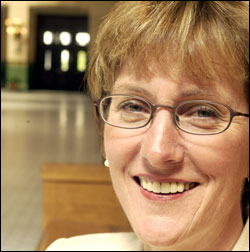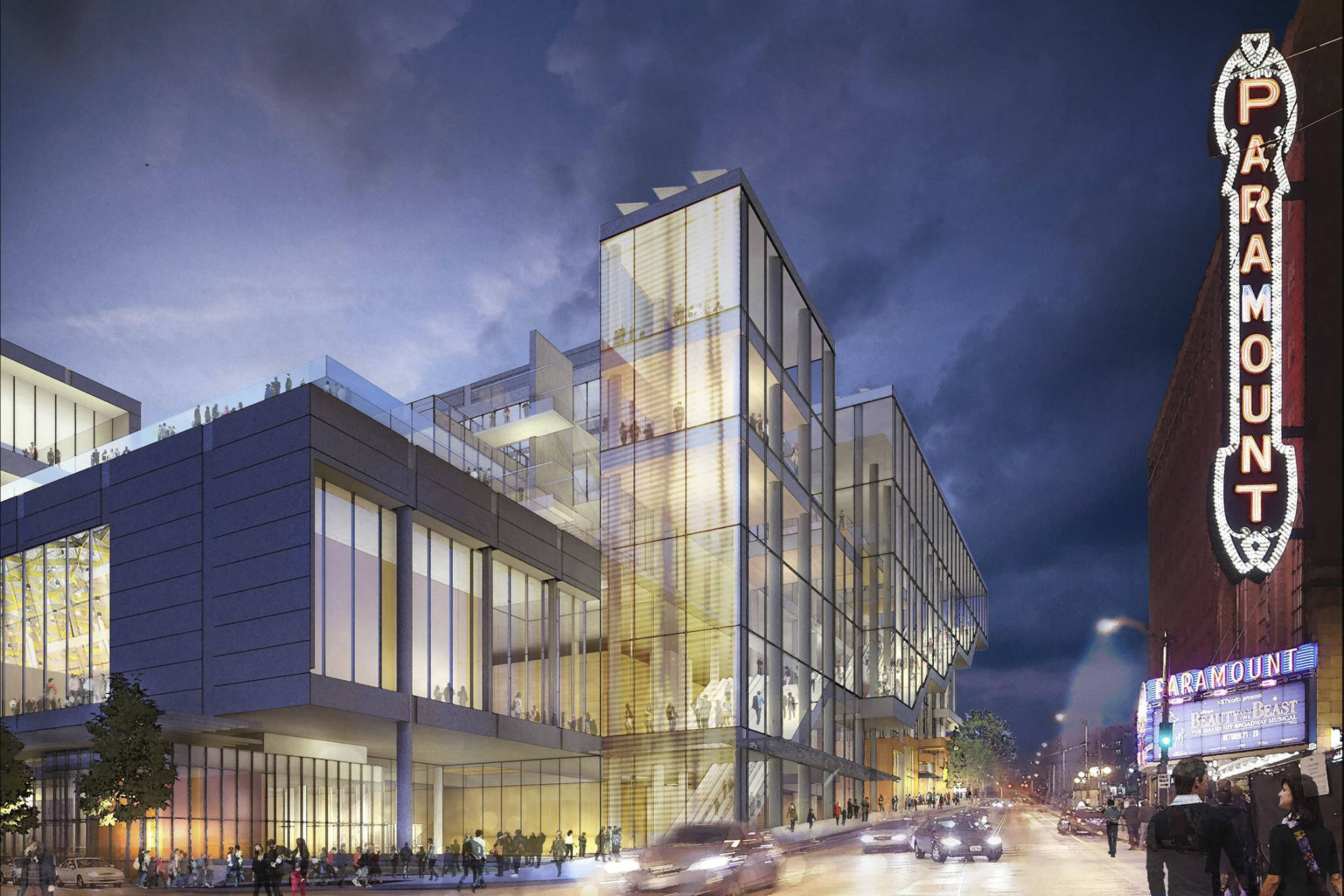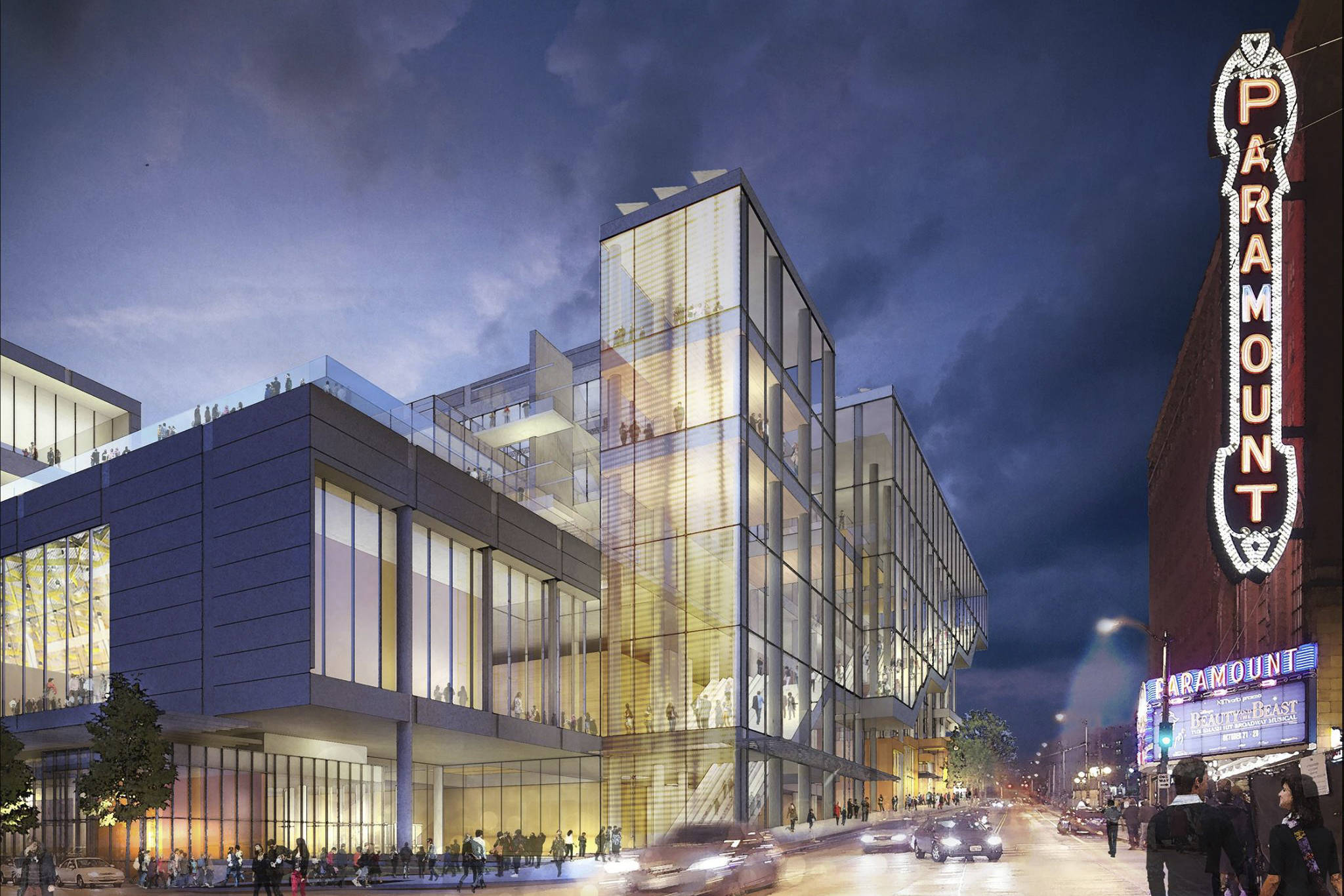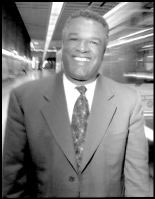From 2000 to 2002, Sound Transit was synonymous with train wreck. Voters created it in 1996 to build and operate regional express buses, a commuter rail between Tacoma and Everett, and a light rail from Seattle’s University District to Seattle-Tacoma International Airport. After years of questions about accounting and accountability, none of that light-rail track has been laid. But it’s been a good year for headlines at the tri-county transportation agency. Consider some highlights from newspaper coverage in 2003: “Now they’re getting ‘somewhere’: Light-rail to reach airport” (The Seattle Times, Jan. 16); “Bush’s budget provides money for light-rail line” (Times, Feb. 4); “Seattle-Everett Sounder line finally leaves station” (Seattle Post-Intelligencer, May 29); and “Construction bids for Sound Transit roll in at 15% less” (Times, June 14).
To be fair, there have been cautionary details in those stories and skeptical headlines in the dailies, as well. Critics say the only thing that has changed is that the press has simply been duped by the agency’s brilliant public-relations effort and raw political power.
But Sound Transit also has notched significant court victories in the past year, defeating efforts by both the right (Tim Eyman’s Initiative 776) and the left (Sane Transit) to stop light rail. Good news arrived on press releases, too: On May 20, Sound Transit’s express-bus service celebrated its 20 millionth rider; on May 8, a member of President Bush’s cabinet, U.S. Secretary of Transportation Norman Mineta, praised Sound Transit before Congress, saying he was “very confident about the revised plan” to build light rail from downtown to just shy of the airport. Mineta continued, “I personally have a lot of confidence in the executive director, who has gone a long way in improving” the agency.
LAST MONTH, JONI EARL, a 49-year-old native Washingtonian who has spent her entire adult life in government, quietly marked her second year as executive director of Sound Transit. After eight years as deputy executive of Snohomish County, she joined the transit agency in 2000 as chief operating officer. Known as a nuts-and-bolts administrator, Earl’s usual schedule is five 12-hour days, followed by four to six hours on the weekend. She is well compensated for her long hours, earning $172,000 a year. She directs an agency with 324 employees and a 2003 budget of nearly $565 million$434 million in capital costs, $80 million for operations, and $50.8 million for administration.
In her modest office in the grand Union Station headquarters of Sound Transit, Earl comes across as a sincere, charming woman who loves her job. She’s thin with short frosted hair, designer glasses, and understatedly elegant clothes. She is the “proud grandma” of two young girls, whose pictures adorn her office. Ultimately, she brings her job back to improving people’s quality of life. She says it is rare to have a job “where you can change people’s lives. That’s what public transportation can do: give people options. When I get e-mails or hear stories of passengers saying how commuter rail gives them more time with their kids, it makes it all worthwhile.”
Unfortunately, the debate over Sound Transit takes place in a highly specialized language that is hard for those ordinary people to understand. Both supporters and opponents toss around obscure acronyms, pile up statistics, and refer to reports that sound very authoritative and impressive but aren’t easily evaluated.
Earl’s supporters, who include both Democratic and Republican elected officials, environmentalists, transit wonks, and business leaders, say she has done a remarkable job of transforming an agency that was performing badly and misleading the public about the cost of its projects. Her boosters, however, are people who believe in the agency’s mission and technologieslight rail (like Portland’s MAX or Vancouver’s SkyTrain, for example) and commuter rail (more like Amtrak).
Earl has not won over those who think that rail is a poor choice for the regiona different set of elected officials, environmentalists, transit wonks, and business leaders. Some of them believe she continues Sound Transit’s history of misrepresenting rail’s costs and benefits for metro Puget Sound. Says Emory Bundy of the Coalition for Effective Transportation Alternatives: “Bottom line, the egregious falsehoods that characterized Sound Transit in 1996 . . . continue unabated. But so far, Joni Earl is treated as though she is a public-spirited professional.”
EARL’S FANS SAY the agency already is delivering real alternatives to congested freeways. The commuter-rail service from Tacoma to Seattle carries thousands of people on three round trips a day with stops in Puyallup, Kent, Tukwila, and elsewhere. By the end of the year, Sound Transit hopes to extend the trip to Everett, eventually even adding a stop in Eyman’s hometown of Mukilteo. The critics reply that it’s too expensive. They argue that for far less money the same number of passengers could be carried by buses. Supporters point out that buses get stuck in traffic and argue that offering an alternative with dedicated right-of-way is an important part of transportation planning. So it goes, back and forth, ad infinitum.
Sound Transit’s express-bus service has 19 routes in King, Snohomish, and Pierce counties that carry an average of 28,400 commuters on each weekday, and it is building park-and-ride lots, transit centers, and direct-access freeway ramps around the region. There is little grumbling over this bus program.
Earl has had the most dramatic impact on light rail, her supporters say. She led the difficult task of cutting back the route from the promised 21 miles from the U District to Sea-Tac Airport to 14 miles, from downtown’s Convention Place to South 154th Street in Tukwila, 1.6 miles from the airport. And, they say, she leveled with the public about the huge price tag: $2.4 billion. Her supporters say light rail is a vital part of transportation for the Puget Sound area. Says state Secretary of Transportation Doug MacDonald: “Sooner or later, we have to have rail in the I-5 corridor. The problem with buses is they will get stuck on the roadways. Rail is the long-term answer.”
EVERYONE AGREES Earl has made real progress with the federal bureaucracy Sound Transit is counting on to pony up $500 million of the light-rail costs. Two and a half years ago, in the final hours of the Clinton administration, then Transportation Secretary Rodney Slater signed the agreement authorizing the federal dough for the 21-mile U-District-to-Sea-Tac line. Congress and the Bush administration nixed it. A subsequent investigation by the U.S. Department of Transportation’s Office of the Inspector General found that the Federal Transit Administration “did not perform satisfactory due diligence” on the project. Since then, Earl has overseen a whole new application on the shorter, more expensive line that critics have dubbed “the train to nowhere” because it doesn’t reach the airport.
The 14-mile “southern segment” has received thumbs-up from the Bush administration and part of the federal bureaucracy, but it still awaits an evaluation by the Transportation Department’s Office of the Inspector Generalthe folks who blew the whistle before. There also is grumbling in Congress. U.S. Rep. Earnest Istook, R-Okla., who even killed a light-rail project in his own district, has taken over a key committee and might fight the project. And as reported Monday, June 30, in The Seattle Times, U.S. Rep. Jennifer Dunn, R-Bellevue, doesn’t think an Interstate 5 rail line is going to do much to fix the metro area’s traffic problems.
Bundy and his allies hope something derails the train. “It’s all over if [Sound Transit] starts admitting how much [light rail] will cost, how long it will take, and how little it will do.”
Detailing Bundy’s critique would take thousands of words, but the basic question of the cost of the southern segment is a good example of how these debates play out.
Earl says the cost is $2.4 billion. “That’s all-inclusive,” she says. Bundy says the cost is $2.9 billion and claims his figure is drawn from Sound Transit’s own financial plan. “I have strong feelings about the continuing pattern of misrepresentation by Earl,” he says. Bundy sent Seattle Weekly the Sound Transit document he used to draw his conclusion.
Sound Transit’s deputy finance director, Brian McCartan, went over the document and pointed out a couple of places where Bundy had included hundreds of millions in costs that were not for the southern segment, but for other aspects of light railnamely, expanding the line to Northgate and the airport.
Bundy did not dispute McCartan’s assertions.
McCartan also pointed out that in addition to Bundy’s analytical errors, the activist was using a different set of numbers than Sound Transit in arriving at the figure of $2.9 billion. Sound Transit’s $2.4 billion is based on criteria established by the Federal Transit Administration (FTA) on what to include when calculating the cost of a light-rail project. In this way, McCartan explains, the FTA knows it is comparing apples to apples when it looks at light-rail projects around the country.
Bundy believes this method of cost estimation is inadequate. He argues, “The FTA has been an active accomplice in the misrepresentation” of light rail in general. “I believe all project-development costs should be revealed, accurately and fully, and Sound Transit prefers to understate them.” For instance, Bundy argues that a $50 million mitigation fund for Rainier Valley businesses should be included in the cost, even though Sound Transit isn’t paying for itthe governments of Seattle and King County are.
Sound Transit spokesperson Geof Patrick notes, “You can argue until the cows come home about what costs should be in or out.”
THE DEBATE OVER whether rail is a worthy investment will continue for decades, with both sides pointing to increasingly complex evidence in the form of land-use patterns, population growth, implementation of multibillion-dollar projects, and thousands of actual riders on trains. Earl already has chosen sides in that debate. She is now trying to build the rail one baby step at a time. Using that yardstick, even Bundy concedes she has made progressthough that is a mark against her in his mind. Says Bundy: “There’s a good chance [Sound Transit] will get the [federal] money and they will finish that [southern segment]. I wouldn’t be surprised if there were some cost overruns, but I don’t think they will be tremendous. They will probably be late.” If Bundy is correct, once that’s done, the two sides can commence arguing about getting to the airport or going north from downtown.








